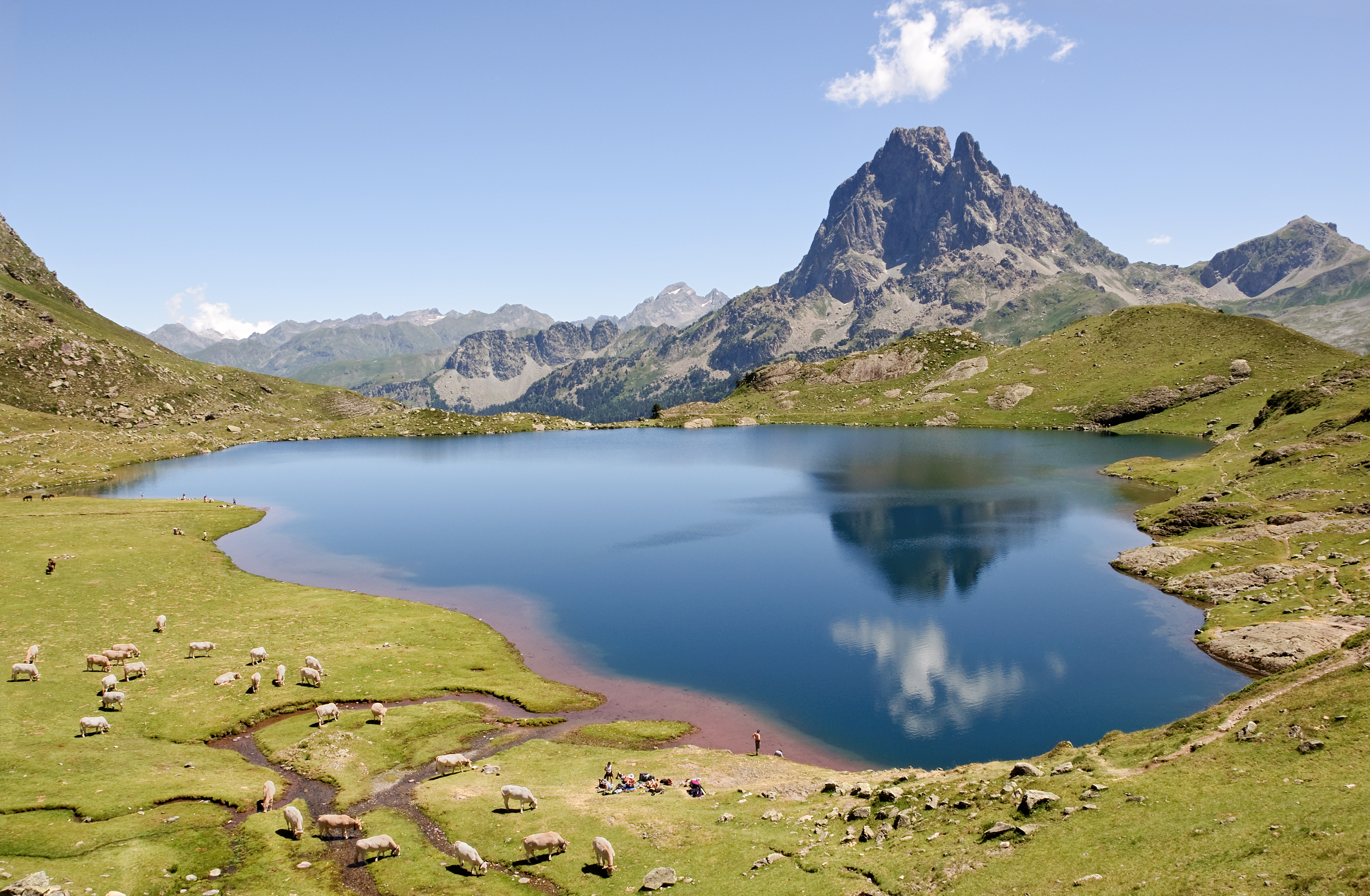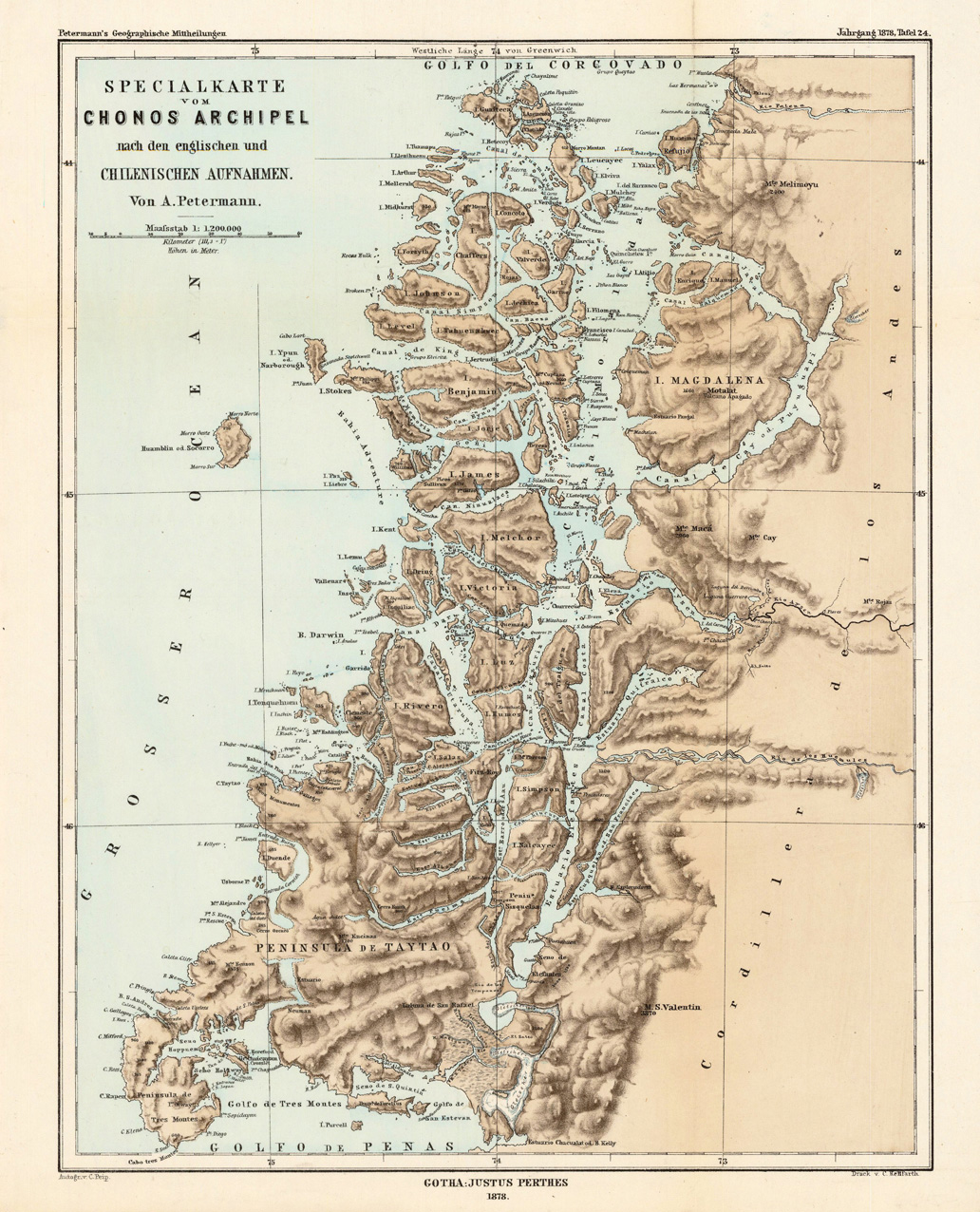|
San Rafael Lake
San Rafael Lake is an arc-shaped coastal lake located in the Aysén del General Carlos Ibáñez del Campo Region of Chile, within the national park that bears its name. To the north the lagoon is connected to the Moraleda Channel, to the south lies the Ofqui Isthmus. To the west and east lie the Taitao Peninsula and the Northern Patagonian Ice Field respectively. The lake was formed by the retreat of the San Rafael Glacier in the Northern Patagonian Ice Field. Today it is a popular tourism destination, and ships sail from Puerto Chacabuco, Puyuhuapi and Puerto Montt to the lagoon nearly every day to see the ice falling from the glacier into the lagoon. Cruises pass by this area. The lake was visited by the Antonio de Vea expedition on December 1675. The expedition entered San Rafael Lake taking note of its windy conditions, the San Rafael Glacier and the swampy shores in the south that make up the Isthmus of Ofqui. Antonio de Vea entered San Rafael Lake through Río Témpa ... [...More Info...] [...Related Items...] OR: [Wikipedia] [Google] [Baidu] |
Isthmus Of Ofqui
The Isthmus of Ofqui is a narrow isthmus that connects the Taitao Peninsula with the Chilean mainland. The isthmus is bounded in the south by the Gulf of Penas, in the north by the San Rafael Lagoon, in the west by the Taitao Peninsula and in the east by the Northern Patagonia Ice Field. Much of the swampy isthmus is drained by San Tadeo River that flow in SSW direction to the Gulf of San Esteban. Geologically it is considered the southern end of the Chilean Central Valley, and the Liquiñe-Ofqui Fault. The Isthmus of Ofqui lies close to the Chile Triple Junction where the Nazca Plate, the South American Plate, and the Antarctic Plate meets. The Isthmus of Ofqui canal construction project In 1937 the Chilean Government ordered the construction of a canal through the isthmus in order to open a direct passage from the Moraleda Channel to the Messier Channel and avoid going out into the open Pacific Ocean to get around the Taitao Peninsula: # a 2,200 m long, 17 m wide, 5 m dept ... [...More Info...] [...Related Items...] OR: [Wikipedia] [Google] [Baidu] |
Lakes Of Aysén Region
A lake is an area filled with water, localized in a basin, surrounded by land, and distinct from any river or other outlet that serves to feed or drain the lake. Lakes lie on land and are not part of the ocean, although, like the much larger oceans, they do form part of the Earth's water cycle. Lakes are distinct from lagoons, which are generally coastal parts of the ocean. Lakes are typically larger and deeper than ponds, which also lie on land, though there are no official or scientific definitions. Lakes can be contrasted with rivers or streams, which usually flow in a channel on land. Most lakes are fed and drained by rivers and streams. Natural lakes are generally found in mountainous areas, rift zones, and areas with ongoing glaciation. Other lakes are found in endorheic basins or along the courses of mature rivers, where a river channel has widened into a basin. Some parts of the world have many lakes formed by the chaotic drainage patterns left over from the last ic ... [...More Info...] [...Related Items...] OR: [Wikipedia] [Google] [Baidu] |
Lakes Of Chile
The following is a list of lakes in Chile. It consists of lakes of varying types and origins but the majority of the lakes (especially those in southern Chile) are glacial in origin. The watershed or catchment area is the geographical area of land that drains into the lake. Lakes by area Note: The lakes are ordered by their area within the political boundaries of Chile. Lakes by natural region Lakes in Norte Grande * Chungará Lake * Cotacota Lagoons * Laguna de Cotacotani * Laguna Lejía * Quantija Lagoon * Miscanti Lagoon Lakes in Norte Chico * Conchucha Lagoon * Embalse Corrales (man-made) * Laguna Verde * Tranque Puclaro (man-made) Lakes in Zona Central * Colbún Lake (man-made) * Laguna del Inca * Laguna del Laja * Peñuelas Lake (man-made) * Rapel Lake (man-made) Lakes in Zona Sur * Budi Lake * Caburgua Lake * Calafquén Lake * Chapo Lake * Colico Lake * Conguillio Lake * Constancia Lake * del Las Rocas Lake * Galletué Lake * Gris Lake * Huil ... [...More Info...] [...Related Items...] OR: [Wikipedia] [Google] [Baidu] |
Revista De Marina
''Revista de Marina'' is a bimonthly magazine published by the Chilean Navy since 1885. Its scope is "naval and maritime thought" relating to Chile or foreign countries. The headquarters is in Valparaíso Valparaíso (; ) is a major city, seaport, naval base, and educational centre in the commune of Valparaíso, Chile. "Greater Valparaíso" is the second largest metropolitan area in the country. Valparaíso is located about northwest of Santiago .... The magazine covers topics of the naval profession and those of national interest including the use of naval power, the promotion of national maritime interests, knowledge of history, science, the arts, nautical sports, commerce and those other activities related to the sea. References External links * 1885 establishments in Chile Bi-monthly magazines Magazines published in Chile Chilean Navy Magazines established in 1885 Maritime magazines Mass media in Valparaíso Military magazines Official military publications ... [...More Info...] [...Related Items...] OR: [Wikipedia] [Google] [Baidu] |
Tres Montes Peninsula
The Tres Montes Peninsula ( es, Península Tres Montes, English: ''Three Hills Peninsula'') is a southwestward projection of Taitao Peninsula which in turn connects to the mainland of Chile by the narrow Isthmus of Ofqui. The peninsula is situated in Aysén del General Carlos Ibáñez del Campo Region close to the Chile Triple Junction of the Nazca, Antarctic and South American plates. The peninsula is famous for the dangerous waters surrounding it. In the 1850s Chilean navy officer Francisco Hudson read Robert FitzRoy's book ''Sailing Directions for South America'' concluding there was a possible north–south sailing route that allowed communication between Chiloé Archipelago to the Straits of Magellan The Strait of Magellan (), also called the Straits of Magellan, is a navigable sea route in southern Chile separating mainland South America to the north and Tierra del Fuego to the south. The strait is considered the most important natural pas ... without rounding Tres ... [...More Info...] [...Related Items...] OR: [Wikipedia] [Google] [Baidu] |
Francisco Fonck
Francisco is the Spanish and Portuguese form of the masculine given name '' Franciscus''. Nicknames In Spanish, people with the name Francisco are sometimes nicknamed " Paco". San Francisco de Asís was known as ''Pater Comunitatis'' (father of the community) when he founded the Franciscan order, and "Paco" is a short form of ''Pater Comunitatis''. In areas of Spain where Basque is spoken, " Patxi" is the most common nickname; in the Catalan areas, "Cesc" (short for Francesc) is often used. In Spanish Latin America and in the Philippines, people with the name Francisco are frequently called " Pancho". " Kiko" is also used as a nickname, and " Chicho" is another possibility. In Portuguese, people named Francisco are commonly nicknamed "Chico" (''shíco''). This is also a less-common nickname for Francisco in Spanish. People with the given name * Pope Francis is rendered in the Spanish and Portuguese languages as Papa Francisco * Francisco Acebal (1866–1933), Spanish w ... [...More Info...] [...Related Items...] OR: [Wikipedia] [Google] [Baidu] |
Francisco Hudson
Punta Arenas by sea from Ancud, and in orange Hudson's proposed route. The red dot shows the 20 km wide Ofqui Isthmus the only obstacle that makes this route intransitable. --> Francisco Hudson Cárdenas ( Curaco de Vélez, Chile, July 1, 1826 – March, 1859) was a Chilean naval officer and hydrographer notable for his explorations of Zona Sur, Southern Chile and Zona Austral, Chilean Patagonia. Hudson sailed on behalf of the Chilean government several times to Peru and Ecuador, assisted the German immigrants arrive to Valdivia but gained notoriety for his explorations and investigations of Maullín River, Roca Remolino and the channels of Aysén Region. Hudson was interested in investigating the possible existence of a sailing route through internal waters from the Chiloé Archipelago to the Straits of Magellan, but came to realize that the Isthmus of Ofqui made this impossible. However his hydrographic works laid the groundwork for Hans Steffen's exploration of Aysén Region ... [...More Info...] [...Related Items...] OR: [Wikipedia] [Google] [Baidu] |
Chilean Navy
The Chilean Navy ( es, Armada de Chile) is the naval warfare service branch of the Chilean Armed Forces. It is under the Ministry of National Defense. Its headquarters are at Edificio Armada de Chile, Valparaiso. History Origins and the Wars of Independence (1817–1830) The origins of the Chilean Navy date back to 1817, when General Bernardo O'Higgins prophetically declared after the Chilean victory at the Battle of Chacabuco that a hundred such victories would count for nothing if Chile did not gain control of the sea. This led to the development of the Chilean Navy, and the first legal resolutions outlining the organization of the institution were created. Chile's First National Fleet and the Academy for Young Midshipmen, which was the predecessor of the current Naval Academy, were founded, as well as the Marine Corps and the Supply Commissary. The first commander of the Chilean Navy was Manuel Blanco Encalada. Famous British naval commander Lord Cochrane, who f ... [...More Info...] [...Related Items...] OR: [Wikipedia] [Google] [Baidu] |
Little Ice Age
The Little Ice Age (LIA) was a period of regional cooling, particularly pronounced in the North Atlantic region. It was not a true ice age of global extent. The term was introduced into scientific literature by François E. Matthes in 1939. Matthes described glaciers in the Sierra Nevada of California that he believed could not have survived the hypsithermal; his usage of "Little Ice Age" has been superseded by " Neoglaciation". The period has been conventionally defined as extending from the 16th to the 19th centuries, (noted in Grove 2004:4). but some experts prefer an alternative timespan from about 1300 to about 1850. The NASA Earth Observatory notes three particularly cold intervals. One began about 1650, another about 1770, and the last in 1850, all of which were separated by intervals of slight warming. The Intergovernmental Panel on Climate Change Third Assessment Report considered that the timing and the areas affected by the Little Ice Age suggested largely indep ... [...More Info...] [...Related Items...] OR: [Wikipedia] [Google] [Baidu] |
Drift Ice
Drift ice, also called brash ice, is sea ice that is not attached to the shoreline or any other fixed object (shoals, grounded icebergs, etc.).Leppäranta, M. 2011. The Drift of Sea Ice. Berlin: Springer-Verlag. Unlike fast ice, which is "fastened" to a fixed object, drift ice is carried along by winds and sea currents, hence its name. When drift ice is driven together into a large single mass (>70% coverage), it is called pack ice. Wind and currents can pile up that ice to form ridges up to tens of metres in thickness. These represent a challenge for icebreakers and offshore structures operating in cold oceans and seas. Drift ice consists of ice floes, individual pieces of sea ice or more across. Floes are classified according to size: ''small'' – to ; ''medium'' – to ; ''big'' – to ; ''vast'' – to ; and ''giant'' – more than . Drift ice affects: * Security of navigation * Climatic impact (see Polar ice packs) * Geological impact * Biosphere influence (see ... [...More Info...] [...Related Items...] OR: [Wikipedia] [Google] [Baidu] |



